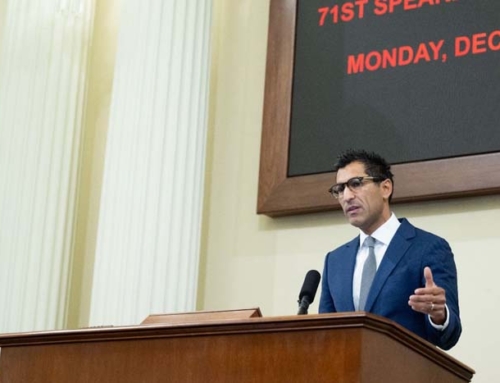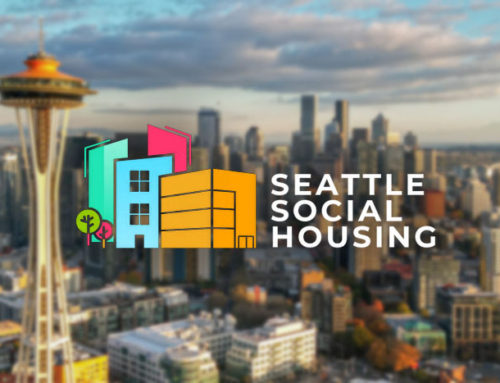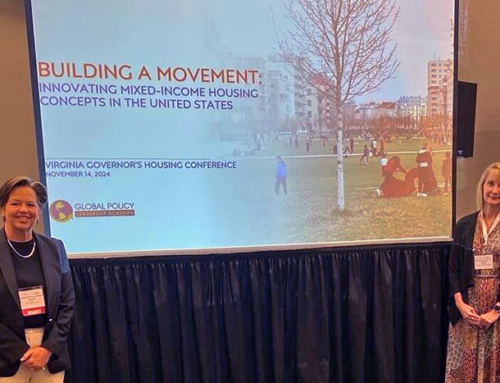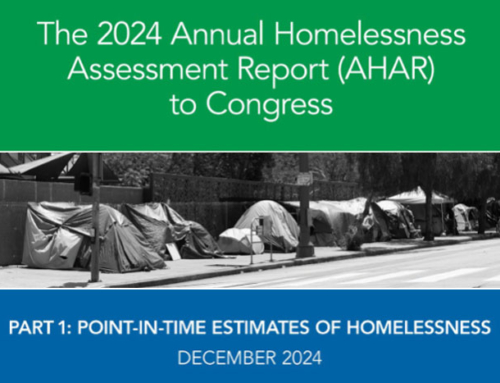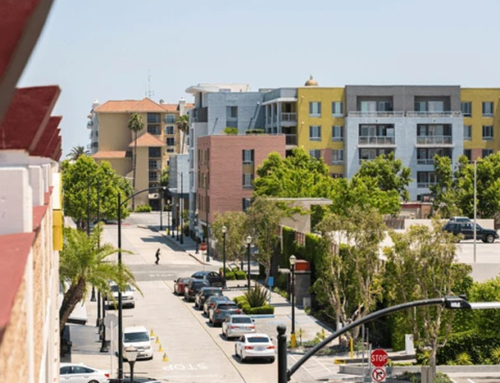Overall, the November election was positive for affordable housing, and though votes are still being counted, here is a rundown of the measures before the voters this November. Read more to learn about measures related to bonds and new taxes, rent control and just cause, and more housing and homelessness measures across the state.
Bonds and New Taxes Prevail
There were more than 20 measures on voters’ ballots in California that would create new funding for affordable housing production, preservation, and protection activities. Key highlights include:
- City of Los Angeles voters overwhelmingly said yes to United to House LA, a transfer tax on the sale of real estate valued at $5 million and over, with the annual revenues projected at $923 million annually. Funds will be used for affordable housing production and homelessness prevention.
- In Oakland, voters said yes to an $850 million bond measure that would direct $350 million to the construction and preservation of interim and permanent affordable housing, with the remainder of the funds allocated to infrastructure improvements.
- In Berkeley, a $650 million bond measure that would have provided money for affordable housing and infrastructure projects, is falling short of the 2/3rds needed for passage, once again proving the difficulty of getting enough voters to say yes to a tax increase for housing. Berkeley voters did, however, agree to a 10- year “empty homes tax,” which is expected to raise between $4 – 6 million a year that could be used for housing.
- Santa Monica voters had competing measures on the ballot, both seeking an increase in the transit occupancy tax for properties valued at $8 million or more. Voters said yes to the measure that provides the most funding for affordable housing, an estimated $50 million annually. In addition, voters approved a measure that increased the transit occupancy tax (TOT), which is estimated to raise $4 million annually, though housing is only one of the potential uses of the funds.
- In San Francisco, voters approved a new tax on homes that are vacant for more than 182 days in a calendar year. The new tax is estimated to raise $20 – 37 million annually, with funds being used for rent subsidies and affordable housing.
Voters in several cities approved general taxes that could be used for activities relating to housing and homelessness. Because these measures were not special taxes, only a majority vote was required.
- East Palo Alto voters increased a business tax on residential landlords with affordable housing and tenant displacement activities as potential activities.
- Emeryville voters said yes to a Real Property Transfer Tax with affordable housing as one of the potential activities.
- Modesto voters increased the City’s Sales Tax with homelessness as one of the potential activities.
- Elk Grove voters approved a Transactions and Use Tax with homelessness one of the potential activities.
- Healdsburg voters said yes to a Transit Occupancy Tax (TOT) that could be used for construction of affordable homes.
- Santa Cruz voters approved a TOT tax that can provide funding for affordable housing for working families and the homeless.
- Solana Beach voters increased the City’s Sales Tax, which could be used to address homelessness.
- Vallejo voters said yes to a Sales Tax increase that could be used to address homelessness.
Several school districts placed measures on the ballot that included housing for homeless students and construction of new affordable homes. Santa Monica Community College District’s Measure SMC looks like it will pass with just over the required 55% vote threshold required of school measures. The measure authorizes the issuance of $375 million in bonds for activities that include housing. Other measures included:
- Alum Rock Elementary School District in San Jose voters said yes to bond funding of up to $71.5 million for school repairs and teacher and employee housing.
- Santa Cruz High School and Elementary School Districts voters approved bond funding to build 80 affordable rental housing for teachers and staff on district-owned land.
- San Diego Unified School District voters approved a $226 million measure to build 500 units for teachers and other district employees.
Rent Control and Just Cause Measures Win Handily
In Oakland, voters said yes to Measure V, which prohibits no-fault evictions for both students and teachers during the school year, extends eviction protections to residents living in RVs, tiny homes, and other units, and makes other changes.
Richmond voters approved Measure P, which capped rent increases for tenants in rent-controlled units to no more than 3% of current rent or 60% of the consumer price index (CPI), whichever is lower.
In Pasadena, supporters of Measure H declared victory. The measure would establish an independent rent control board, limit rent increases to 75% of the increase in CPI, and strengthen eviction protections.
Santa Monica voters said yes to Measure RC, which caps annual rent control increases at 3%, as well as Measure EM, which allows the City’s Rent Control Board to block or modify rent increases on rent controlled units when there is a declared state of emergency.
Mixed Results for More Housing Across the State
- In Los Angeles, voters approved adding 5,000 additional rental units affordable to lower-income families in each Council District for a total of up to 75,000 new homes.
- In South San Francisco, voters approved Measure AA, which will allow for the development of new affordable units that total 1% of the City’s existing homes annually for eight years.
- Voters in Berkeley said yes to a measure that would authorize the development, construction, and acquisition of up to 3,000 additional affordable homes.
- Oakland’s Measure Q, which allows for the acquisition or development of up to 13,000 units of publicly assisted affordable housing, passed handily.
- Sacramento County voters approved Measure D, which will allow the County and its cities to acquire, develop, or construct affordable housing equivalent to 1% of the housing stock each year.
- In Santa Cruz, voters rejected a push to halt the development of a mixed-use library and housing development in the Downtown.
- Voters in San Benito rejected a measure that would have taken away the authority of the Board of Supervisors to approve development in unincorporated County areas and would have required voter approval for each project.
- In Menlo Park, voters said no to a measure that would have prohibited the City Council from rezoning property that was designated for single-family use as of April 15, 2022. If the measure had passed, any change to an R-1 land designation would have required a vote of the people during a regularly scheduled election.
- Laguna Beach voters also rejected a measure that would have created an overlay zoning district, established special requirements for any major development project, and required a vote of the people if a development did not conform to specific requirements.
- Measure Z in Yorba Linda failed by a wide margin to allow increased density on 19 sites in the City to address Housing Element requirements to build 2,400 new homes.
- Brentwood voters approved a measure that created a new Open Space Overlay and prohibited more intensive uses on land currently designated in the City’s General Plan as parks, open spaces, or recreational facilities without a vote of the people.
- Watsonville voters placed a measure on the ballot that would amend the City’s General Plan to keep the Urban Limit Line that was approved in 2002 in place until 2040 with few exceptions, restricting most growth to current urban boundaries. A competing ballot measure would have allowed for the annexation of farmland for housing development. Supporters of the restrictive ballot measure prevailed.
- Benicia voters also overwhelmingly said yes to a ballot measure that “prevented urban sprawl” and preserved agricultural land and open space, extending the current Urban Growth Boundaries for 20 years.
- Measure K in Costa Mesa, a local control measure which would preserve single-family neighborhoods and restrict development to commercial and industrial areas as well as remove regulatory hurdles for affordable housing, is too close to call.
- In Redlands, voters said no to a measure placed on the ballot by City leaders to limit the height of new buildings in the City to between two and four stories and add new “rigorous” standards for the evaluation of new projects with a residential component. Opponents felt that this measure favored outside development interests and wanted lower height limits.
In San Francisco, two competing measures that took different approaches to the City’s housing crisis failed to get the votes needed to pass. Local progressives pushed for Measure E, which would maintain local control over housing production and streamlining the process for affordable development. The Mayor and other supporters were behind Measure D, which would streamline the development process for affordable and mixed-income housing projects.
Homelessness Measures Approved
Sacramento’s Measure O passed easily, changing the way the City responds to street homelessness and encampments. The new law will ban encampments of more than three people on public property as long as shelter beds are available and have been offered. In addition, the City must provide a minimum number of emergency shelter beds, perform regular outreach, and allocate up to 50% of unobligated funds from the General Fund (not to exceed $5 million) if other funds cannot be accessed. Before the measure can be implemented, a partnership agreement between the City and County regarding the provision of services will need to be signed.
San Francisco voters overwhelmingly approved Measure C, which created a Homelessness Oversight Commission—called the Our City, Our Home Oversight Committee– to oversee the work of the Department of Homelessness and Supportive Housing. The new Commission will be responsible for approving the Department’s budget, setting goals, holding hearings and taking testimony, and conducting public education and outreach on homelessness.
© LeSar Holdings/LeSar Development Consultants. All Rights Reserved. Please be advised that any republishing of copyrighted material provided by our organization, in whole or in part, requires prior written authorization. For permission, please reach out to [email protected]. We appreciate your understanding and compliance in upholding copyright laws.




